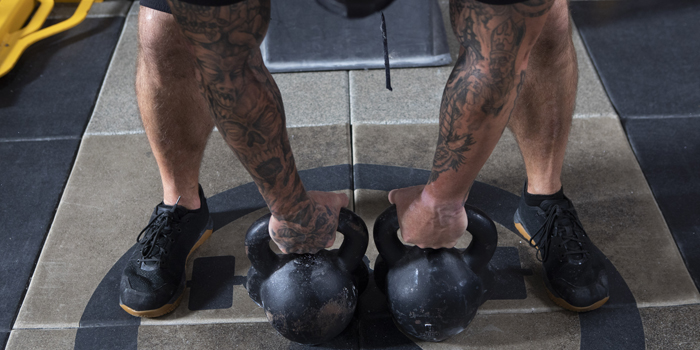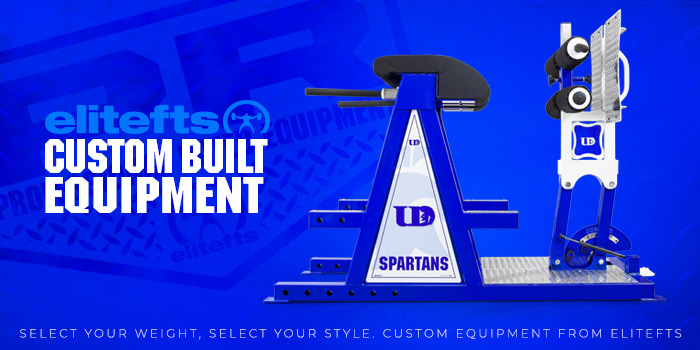
The first time I touched a barbell was probably twelve years ago as a young high school athlete. I had no idea what was going on. I've been taking training seriously for about seven years. Just two years ago, after hearing Dave Tate and Jim Wendler talk about training philosophies, I decided to start drafting my training philosophy.
"At some point, everyone serious about their training has to raise the flag, throw down their sword and exclaim, 'This is what I believe in.' I see too many people who are simply floating around, grasping at the latest and greatest proclaiming allegiance to whatever trend or idea is most popular. Many make a good case, and some are worth examining, but at the end of the day, your success is what matters. And if you have strong core principles, you can assess the good and the bad, take the good things and apply them to your training."
Jim Wendler
On a legal pad, in March of 2020, I wrote, "Training Philosophy = Do what makes sense and have a good reason for every workout, exercise, and movement."
Since then, I've expanded on that by establishing five basic principles. They aren't perfect and will almost certainly change as I grow and learn, but they keep me grounded and help me make logical decisions about programming and training.
5 Basic Training Principles
Set Goals
Whether short or long term, establishing a goal creates a foundation for my training. It gives me a "why" that drives my decision-making process. Sometimes there are multiple goals, sometimes only one, specific at times and broad at others. Regardless, there is always a goal. Otherwise, my "training" is just "working out."
In 2019, I failed the US Army's Ranger School. I spent 91 days there, mind you, and many students graduate the course in just 62. After being deprived of food, sleep, and a normal life for that amount of time, all just to fail, I felt soft, weak, and sorry for myself.
I made the decision to register for the St. Jude Children's Research Hospital Marathon in my hometown of Memphis, Tennessee. Why? Because I felt like I needed to do something hard and worthwhile to get my edge back. I ran over 500 miles over the course of half a year, met my goal of completing the race below three hours and 45 minutes (finishing at 3:42:01), and learned a lot about myself. More importantly, I raised over $2,000 for the kids of St. Jude. I wouldn't have accomplished any of that if I hadn't set a big goal.
Now, I've set a goal to compete in my first powerlifting competition before the end of 2022.
Prioritize
You can't be a master of everything. Based on your goals, prioritize the movements, methods, and modalities that benefit you the most. Supplemental lifts, accessories, and GPP are undoubtedly important but don't get so wrapped up in those things that you forget what you're training for. Focus on the big rocks and keep the main thing the main thing. This doesn't just apply to training. We've all seen endless ads pop up on social media for the latest massage guns, mobility tools, and recovery supplements.
As a novice powerlifter, if I'm doing paused deficit Zercher deadlifts against bands and foam rolling for two hours a day, but my squat sucks, and I only sleep five hours a night, my priorities are not where they need to be. Likewise, if I spend 30 of the 45 minutes I get in a session with a high school soccer team teaching them how to power clean instead of having them squat, lunge, jump, or sprint, I've missed the mark.
Harmony
As I step down from my soapbox, rambling about how you can't be a master of everything, you still need to do a little bit of everything. I originally had this principle titled as balance before realizing that 1) I need to stop ripping Wendler off and 2) balance implies that two sides of a scale are equally weighted.
Harmony is defined as a "pleasing combination of different parts" or "when things seem right or suitable together." When trying to decide what to implement into my training (and life in general), I try to think about what will best serve me. Going back to my novice powerlifter example, doing hour-long hot yoga and running dozens of miles a week would be counterproductive. Instead, ten minutes a day of mobility and a few sled-dragging sessions per week would serve me well.
Common Sense
I'm not currently credentialed in the industry—I'm a military guy with a bachelor's in marketing. Over the past three years, I have read, listened, and learned a lot (mostly from free content) that I have applied to my training (and my soldiers' PT sessions) with great success. The biggest downside to knowing more about training is what's often referred to as "paralysis by analysis." Sometimes, I have to take a step back and remind myself of my original philosophy to "do what makes sense and have a good reason for every workout, exercise, and movement." If I don't have a sound, goal-derived purpose for adding or changing an exercise, session, or day in my programming, then I don't. As someone who, like many, has struggled with lower back pain, I'm forced to apply this principle often to help avoid flare-ups or re-injury.
Find a Happy Medium
There are a couple of meanings behind this one. It's a reminder to properly moderate the many aspects of training. I try not to be the guy who doesn't warm up at all or the guy who spends an hour warming up. I'm not afraid of training hard, but I do my best to regulate it so that I'm not crushing myself on a weekly basis.
Additionally, this guiding principle serves as a reminder to avoid absolutes and take different perspectives into account when making programming, recovery, or dietary choices. Everyone in the industry has their biases, but the best folks to learn from are the ones whose answer is usually "it depends." If my training, recovery, and diet plans resemble some combination of everything I've learned from folks like Louie Simmons, Ed Coan, Stan Efferding, Stuart McGill, Matt Wenning, and Layne Norton, then I feel good about where I am.
References
- Wendler, Jim. 5/3/1 Forever: Simple and Effective Programming for Size, Speed, and Strength. Jim Wendler LLC, 2017.
Hunter Richardson serves as an infantry officer in the United States Army. He trains in a variety of ways and loves his garage gym dearly. Hunter currently volunteers as an assistant strength coach for local middle and high school athletes. You can find Hunter's training on Instagram @squatters_rites.











Love seeing the love for Memphis and St. Jude. Great Job raising the money for the kids and hitting your marathon goal. Thanks for sharing your principles too. I've been thinking about taking the time to write mine down recently and this article gives me some needed push on that front. Hope to run into you at a meet sometime. I'm doing the RPS one November 6 and highly recommend it for first time competitors.
"Whoop that trick"
First, thank you for you’re service. Second it was refreshing to read your article first. As a PL athlete since the 1980s, you are absolutely right about setting goals, taking what you learn good and bad, assess and then keep what works for you at this novice stage. I have been multitime, USAPL Natioanl, world champion, OL weightlifting Champion and am a 4 xHall of Fame Female athlete. Doing this back then before it was cool. But everything I read, your plans, are spot on. I have been The head adaptive Strength coach for the USMC, Wounded Warriors. My gym I started in MD called Iron- Strength Training Education and Performance. My step brother, was, Dr Ken Leistner he was my mentor, coach and I felt you want to read great old time Strength articles look him up. My gym is my legacy to him, and to all I’ve accomplished. We teach, learn, and reach out to al who come into train. They are always amazed at the great atmosphere and support. You will do well, and I look forward to hearing about the journey to the platform and seeing the results. In Strength, LJ Belsito